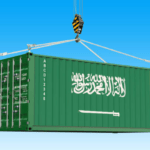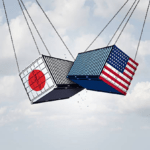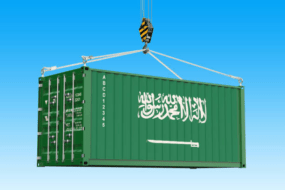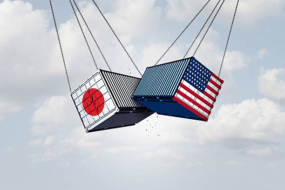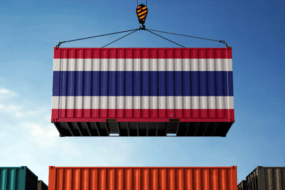- Home
- Trade News
- Declining imports of face mask ...

Singaporeans will no longer be required to wear masks except on public transportation and in healthcare facilities beginning next Monday (Aug 29). The authorities announced details on Wednesday after Prime Minister Lee Hsien Loong said during his National Day Rally speech that COVID-19 rules on wearing masks will be eased.
PUBLIC TRANSPORT
Masks will still be required to be worn on public transportation modes such as the MRT, LRT, and public buses, as well as in indoor public transportation facilities such as bus interchanges and MRT platforms. On private modes of transportation such as taxis, school buses, and private bus services, masks will be optional. According to the Ministry of Health (MOH), passengers should check with private operators for additional service requirements. While masks are no longer required, drivers and passengers in taxis and private-hire vehicles are encouraged to continue wearing them, especially if they are feeling ill, according to the Land Transport Authority. Airports, naturally ventilated bus interchanges, and retail areas of bus interchanges, MRT and LRT stations will not require masks.
INTERNATIONAL FLIGHTS
Director of Medical Services at the Ministry of Health During a press conference, Kenneth Mak stated that when it comes to international flights, the requirement is determined by the rules of the destination of choice as well as the airline. “The carrier may impose requirements based on his country of origin as well,” he explained. “Where there is a mandatory requirement for masks to be worn… the mask must be worn on the flight itself.” However, in some countries, such as the United States, wearing a mask is optional. “In that situation, where countries do not enforce or will not require mask-wearing, flights to those destinations will not require mandated wearing on board the flight as long as the carrier does not have such a requirement as a condition for travel on that particular carrier as well,” Assoc Prof Mak explained.
This means that passengers will be required to wear masks on outbound commercial flights and ferries from Singapore to destinations where masks are required. According to the MOH, this also applies to inbound commercial flights and ferries into Singapore from destinations that require mask wear onboard. Outbound commercial flights and ferries from Singapore to destinations that do not require mask-wearing onboard, as well as inbound commercial flights and ferries into Singapore from destinations that do not require mask-wearing onboard, do not require masks.
Singapore Airlines announced that beginning on August 29, passengers will not be required to wear masks on flights unless they are travelling to or from destinations that require them. The airline provided a list of destinations that require masks.
HEALTHCARE FACILITIES
The mask-wearing requirement will continue to apply to healthcare facilities, residential care homes, and ambulances. Welfare and sheltered homes for the elderly, as well as adult disability homes, are examples of these. The same is true for COVID-19 treatment facilities, testing centres, and vaccination clinics. Masks will also be required in retail and food service establishments, as well as common areas within hospital buildings, national specialty centres, and polyclinics. However, masks are not required at physiotherapy and other allied health clinics located outside of hospitals for services such as speech therapy and occupational therapy, according to the MOH. Masks are also not required in facilities that provide non-residential community services such as center-based care, day care, and home care.
SCHOOLS
While the multi-ministerial task force did not provide information on mask use in schools during its press conference on Wednesday, the Prime Minister stated earlier in his National Day Rally speech that masks should not be worn in school. “The children must be able to see their teachers’ and each other’s facial expressions… “It’s critical for their learning and development,” he explained.
RULES FOR FOOD HANDLERS
Existing sector requirements for food handlers to wear masks remain in effect, according to a statement issued by the Singapore Food Agency (SFA) on Wednesday. In April 2020, the SFA mandated that all food handlers wear masks or other physical barriers. According to the SFA, this applies to all employees involved in the sale and preparation of food and beverages at retail F&B establishments such as hawker centres, coffee shops, restaurants, supermarkets, trade fairs, and non-retail food establishments such as food processing establishments and slaughterhouses.
“All food handlers will still be required to wear a mask or spit guard over his nose and mouth capable of preventing any substance expelled from his mouth or nose from contaminating food,” the SFA stated. Face shields are not permitted because, due to a large gap at the bottom of the shield, they are not considered effective physical barriers. Those delivering plated food to customers, collecting payments, or performing cleaning tasks do not need to wear masks, according to Amy Khor, Senior Minister of State for Sustainability and the Environment.
Face mask surplus
According to fashion designers and other manufacturers who retooled their factories last year to produce different varieties of face coverings to help slow the spread of the coronavirus, the CDC last week said fully vaccinated individuals no longer need to wear masks in most settings, causing already waning mask sales to plummet. “Mask sales have almost disappeared,” Los Angeles Apparel founder Dov Charney told CBS MoneyWatch. “We did really well with it, and our employees were proud to be a part of it — and now we’re focusing on getting back to business as usual.”
Last March, Charney and other apparel manufacturers responded to government requests for local businesses to produce face masks and other personal protective equipment in the midst of a nationwide medical supply shortage during the peak of the COVID-19 outbreak in the United States.
According to Charney, when the South Central L.A.-based company was at its peak, more than 1,000 Los Angeles Apparel employees were producing hundreds of thousands of masks per week. “Masks sold extremely well. We were making them before the government told people to wear them, and when the government changed its mind, we had them in stock. It turned into a multimillion-dollar moment in a matter of days because we were in the right place at the right time “According to Charney.
Brian Wolin, a chiropractor who entered the mask market when hospitals couldn’t get enough medical-grade PPEr, has also noticed a recent drop in orders.
Protective Health Gear, which manufactures disposable NIOSH-approved N95 respirator masks, began tapering production last week as a result of the CDC’s surprise announcement easing requirements, which slowed new mask orders.
Protective Health Gear now produces approximately 25,000 masks per day at its New Jersey headquarters, down from more than 100,000 masks per day when demand was highest.
If demand does not improve — sales have dropped by about half since the beginning of the year, according to Wolin — he intends to halt production entirely.
“We will undoubtedly cease production if we do not receive a government order or a buyer for our inventory. We’ll stop producing until we have an order to fill “Wolin stated. Cheap Chinese mask imports have pushed US manufacturers to the brink of bankruptcy as production has plummeted. According to Nikkei Asia, American manufacturer Premium-PPE has seen its monthly mask production drop nearly 90% from last year’s peak, falling to 4 million to 5 million. According to Taisei Hoyama of Nikkei Asia, its factory in Virginia Beach was filled with equipment and unsold merchandise. Its workforce, which once numbered up to 280 people, has shrunk to around 50.
Declining exports
Over 70 Vietnamese companies exported medical face masks to countries such as the United States, Europe, Singapore, and South Korea in August, totaling over 135 million units, a 12% decrease from the previous month. Notably, this is the second month in a row that Vietnam’s face mask export has declined, following a 35% month-on-month decrease in July.
However, face mask export turnover fell in July as the Covid-19 pandemic was gradually contained in many countries. Domestic demand for face masks has also decreased as locals have become more calm and experienced in dealing with the Covid-19 pandemic. Face mask production is considered a viable solution for garment companies in Vietnam to maintain operations and offset losses from lower demand for garments in the face of the growing effects of the Covid-19 pandemic.
3M cut its full-year profit forecast on Tuesday (April 26) as demand for its disposable N95 masks fell in the face of dwindling Covid cases and the industrial behemoth grappled with rising inflation.
The largest US mask manufacturer saw a drop in disposable respirator sales as coronavirus restrictions were lifted.
The company’s problems with supply chain constraints, semiconductor shortages, and raw materials were exacerbated by Russia’s invasion of Ukraine.
To find out more about accessing a new market, you can check out this article which teaches you how to use Trade Data Pro to access Turkey markets: https://blog.tradedata.pro/why-you-should-be-importing-from-turkey-in-2022/
The most trustable and reliable source for Trade Data.
Trade Data Pro is proudly made in Singapore. Singapore has been one of the world’s most politically stable countries, with an open and trade-driven economy. Trade Data Pro is presented by CIC, a government-linked company in Singapore CIC is a Join Venture of Zall Smartcom, SGX and GeTS.) Since the launch of Trade Data Pro in 2018, Trade Data Pro has received overwhelmingly positive remarks from market. This is because Trade Data Pro has wide coverage, low cost, and fast response. There are many leading companies from different industries that have subscribed to Trade Data Pro . Trade Data Pro was awarded with Singapore Quality Class in 2020 and Stevie Award Gold in 2021. Businesses need information to reveal trends, identify market opportunities, track competitors buyers and suppliers, and better understand supply chain potential. Finding these critical data has traditionally been challenging. But this information do exist, but as part of government import and export filing requirement. The detailed shipment information which are within these filings constructions the core of the global trade. Trade Data Pro has gathered and packaged these information as business intelligence. Our solution helps companies understand the flow of goods across borders and features the world’s largest searchable trade database. We do the heavy lifting for you by reviewing, standardising, and cleaning data, then delivering in an intuitive format.
Recent Posts
- Saudi Arabia Exports of Crude Oil Go Down As Diesel Rises
- Finest Mangoes and Rare Litchi Now Headlining India Exports to UAE
- Japan Imports and Exports Reeling and Rising From US Tariffs
- Upsurge for Exports of Thailand: Agriculture and Electronics
- Indonesia Exports: Sunny Outlook Despite Coal, US Challenges
Archives
- August 2025
- July 2025
- June 2025
- May 2025
- April 2025
- March 2025
- February 2025
- January 2025
- December 2024
- November 2024
- April 2024
- March 2024
- January 2024
- December 2023
- November 2023
- October 2023
- September 2023
- August 2023
- July 2023
- June 2023
- May 2023
- April 2023
- March 2023
- February 2023
- January 2023
- December 2022
- November 2022
- October 2022
- September 2022
- August 2022
- July 2022
- June 2022
- May 2022
- April 2022
- March 2022
- February 2022
- January 2021
Categories
Recent Post
Saudi Arabia Exports of Crude Oil Go
- August 25, 2025
- 13 min read
Finest Mangoes and Rare Litchi Now Headlining
- August 21, 2025
- 9 min read
Japan Imports and Exports Reeling and Rising
- July 31, 2025
- 15 min read
All Tags
Agriculture Automotive Brazil Business Business Opportunities Buyers China Coffee Commodities Crops Ecommerce Economic Economy Electronics Energy Environmental Europe Export Exports Future Garments Global Import India Industries International Trade Leads Leads Generation manufacturing Markets Opportunities Pharmaceuticals Prices Rice Russia Supplier Textiles Trade Trade Data Trade Data Pro Turkey Ukraine United States Vietnam Worldwide


